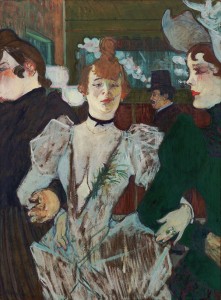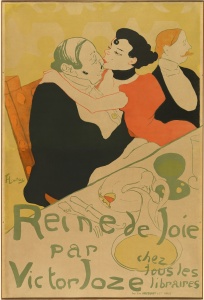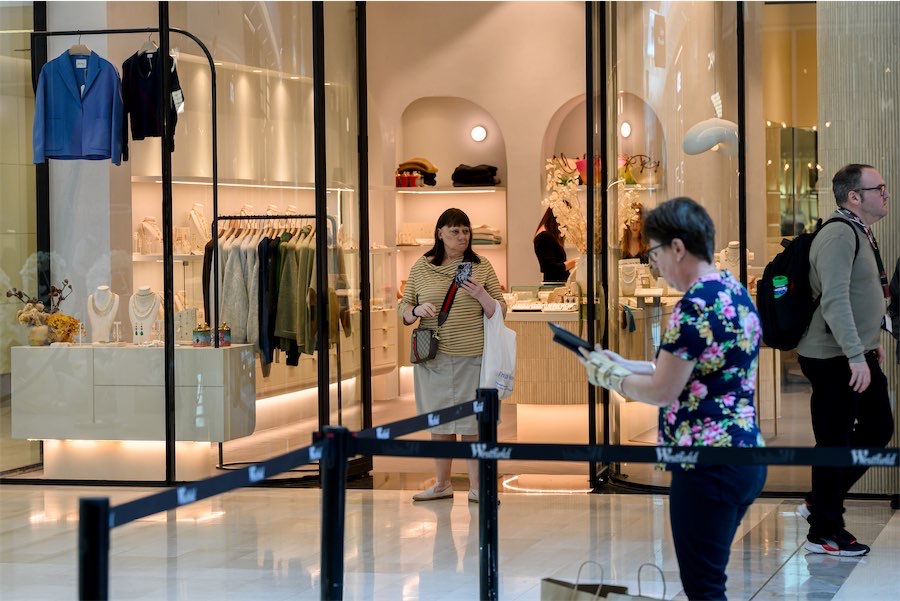HE’s been called “the quintessential chronicler of Paris.”
Yes, it’s Henri de Toulouse-Lautrec, or around aristocratic circles, Henri Marie Raymond de Toulouse-Lautrec-Monfa and the National Gallery of Australia’s senior curator, Jane Kinsman is almost wild with excitement about the coming summer show of his work.

Kinsman, the gallery’s expert on French art, has long been dwelling on the need for a big Lautrec exhibition, as it’s 21 years since the Queensland Art Gallery staged a Lautrec show.
It’s been worrying Kinsman that Lautrec is often exhibited for the popular showpieces only, “but not in a penetrating manner… Many people know nothing of his early work.”
She’ll be filling the gaps for us with some fabulous Lautrec posters, lithographs and drawings she’s been collecting for the gallery over several years. As well, the exhibition is backed up by more than 30 lending institutions and collections.
As a connoisseur of the art of painting, Kinsman will emphasise his eminence in that form.
“Among my key themes is the way Lautrec adopted a brighter palette and method of sketching, always seeing the human figure as paramount.” And, she stresses, though his congenital physical malformation is well-known, he was respected for his ideas about creating expressive characters. As well, in his simplification for posters and use of broad colour, “he moved into abstraction.”
Then there’s what Kinsman demurely describes as the “man about town” aspects of the life of Lautrec, explored in his paintings of extravagant men who could be described as “flaneurs” or dandies, the “boulevardiers’ of late 19th-century Paris.
She promises “a rather nice reassembling,” of portraits of his friends and this exhibition brings together three such paintings that have never been shown together since 1891.
An inevitable focus in any Lautrec exhibition is the female model. He started off depicting a type very much as Edgar Degas had done with dancers, but he preferred the courtesan or street prostitute.
Kinsman believes that exactly like Degas, Lautrec’s types became individuals. Mind you, he was guilty of typecasting his early models such as the celebrated laundress figure, Carmen Gaudin, dismissed by him when she dyed her hair black.

As an outsider, he was most comfortable in Montmartre’s “houses of tolerance” – brothels tolerated, but not legalised. Some of his paintings of this milieu are quite naturalistic and a few, “rather sad”. The famous painting of prostitutes undergoing a medical check, to Kinsman reveals “a skewed system – the prostitutes were checked, but not the men who used them”.
The last section of her exhibition deals with his interest in popular culture and cabarets.
“Given his affliction, which meant that he was not physically able, this was his way of living an exciting life and in it, he found his subject matter,” she says.
This led to some of the finest posters in French art. They were used as advertisements, but as Georges Seurat turned the poster into a collectable item, as Kinsman notes, “Lautrec turned it into a masterpiece”.
And he wasn’t ashamed of his posters, including them in his shows. Friends such as the artist Aristide Bruant and the dancer Jane Avril recognised the importance of this new kind of self-publicity and commissioned him to do posters now regarded as great works of art.
Only early in his career did Lautrec paint scenes from his upper-crust family life, with horses, carriages and life on the estate. “All a bit suffocating,” as Kinsman says, though he adored his mother.
“I’ve always loved Lautrec,” Kinsman says. “He draws like an angel, he deals with society figures and the people around him, he is terrifically insightful as the capturer of personality and he’s a magician.”
“Toulouse-Lautrec: Paris & the Moulin Rouge” at the National Gallery of Australia, December 14-April 2, timed ticketing at 132849 or www.ticketek.com.au
Who can be trusted?
In a world of spin and confusion, there’s never been a more important time to support independent journalism in Canberra.
If you trust our work online and want to enforce the power of independent voices, I invite you to make a small contribution.
Every dollar of support is invested back into our journalism to help keep citynews.com.au strong and free.
Thank you,
Ian Meikle, editor




Leave a Reply